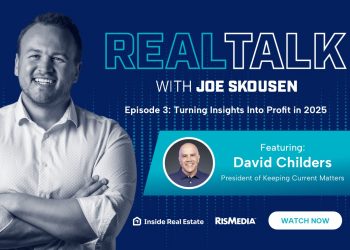By Michael & Jennifer Donovan, Equestrian Services, LLC
RISMEDIA, March 21, 2008-Equestrian community living has been around for decades. California, always the community living trend setter, began designing and planning these equestrian communities in the 1970s. Designed after successful golf community living, this concept offers a community a new theme for people with similar interests to live and interact around a common element – the horse.
Today, as golf courses reach saturation levels, many developers have adopted a new anchor for their developments – the equestrian amenity. The growth of the equestrian community model has sky-rocketed at staggering rates and at last count there were nearly 300 equestrian communities in the United States, all planned or in the process of being built within in the last five years.
The following is a list of key points and questions community builders and developers should address to ensure success of their equestrian community. With appropriate planning and support, savvy builders and developers can tap into this growing market.
– Work with experts that have experience executing all phases of the development process. Work with an organization that offers feasibility, designing and delivering the equestrian model. A golf course developer would hire Jack Nicklaus or Tom Fazio. Today, developers have the opportunity to work with some of the world’s leading horse people, including John Lyons, “America’s Most Trusted Horseman,” and equestrian Olympians Karen and David O’Connor, as they each offer the opportunity to create the world’s first line of branded equestrian facilities and amenities to builders and developers with a turn-key design to management process.
– Identify the right partner to conduct feasibility, planning, design and management. The stakes are high, and just as you would bring experts to the table for golf or other amenities, an equestrian amenity requires specific expertise, detail and special skills that will, in the end, save you time and aggravation and ultimately serve your return on investment goals.
Determine the equestrian program that will best serve your community residents. You need to understand who you are serving. Different types of residents require different programming. Are the residents:
Active adults?
Primary, second, third home owners?
Weekend visitors?
Seasonal visitors?
Multi-generational?
Families?
Competitive or recreational equestrian riders?
Entertainment riders?
Each will bring their own set of requirements and demands. It is wise to plan around their needs.
Consider and address all the program-specific requirements in a community-based equestrian facility. We know from experience that there is no “one fits all” model when designing an equestrian community, unlike other amenities such as golf where there are standard offerings for the golfer. The diversity of horse activities, from dressage and eventing, to reining and western pleasure riding, , and the different equipment and riding environment each requires will need to be considered.
Are the amenity capital costs in line with your development pro forma? Although requiring far less capital investment than a comparable golf amenity, does the equestrian amenity make overall financial sense? Cost basis for the land, number of lots and demographic of your buyer all play a part in determining potential ROI. Additionally, in a slow real estate market the increase in sales-pace obtained from offering a properly designed and executed equestrian amenity can add significant value to a project.
Performing a feasibility study will allow you to evaluate the benefit an equestrian amenity can bring to your project.
Consider the costs to run this operation on a monthly basis. Recognizing that all community-based equestrian amenities operate at a deficit, they must be subsidized either through an HOA assessment or club membership program. Assess its operational feasibility and address these issues early on in the planning phase. A thorough understanding of these costs is paramount to the long term sustainability of an equestrian amenity.
Identify who will manage and/or operate the equestrian facility. Consider hiring a professional equestrian management company who can provide years of quality experience with a talented, trained staff offering exceptional service to the residents and their horses. The previous options – allocating a current staff person unfamiliar with the equestrian lifestyle in a community setting or leasing the facility to an outside operator unfamiliar with overall objectives and needs of the community and the developer and only interested in serving their own agenda – have failed time and again. An organization dedicated to hospitality-based equestrian management will bring the best expertise, long-term, and will ensure both today’s and tomorrow’s objectives are met.
Today’s equestrian buyers are hungry for these developments. But, they are also leery and need assurance. Continuity of service is critical after many equestrian models failed in the past. However, with such high demand for living the equestrian community lifestyle, this market has unmet needs of which a savvy developer can take advantage. By approaching the equestrian amenity development similarly to designing a golf amenity, including proper planning, design, implementation and management, there is an opportunity to set an exceptional standard in equestrian living and successfully enter an exciting market.










